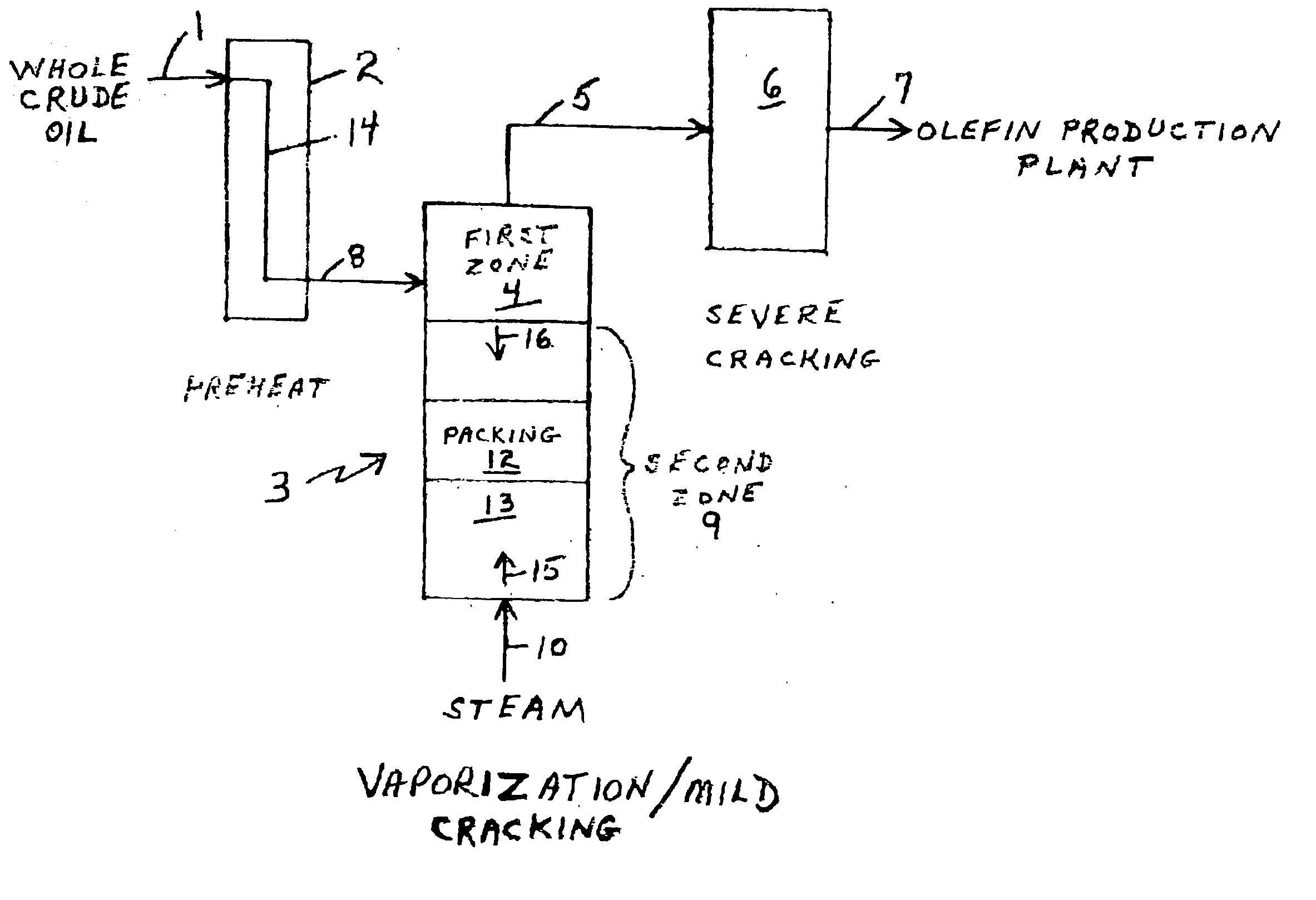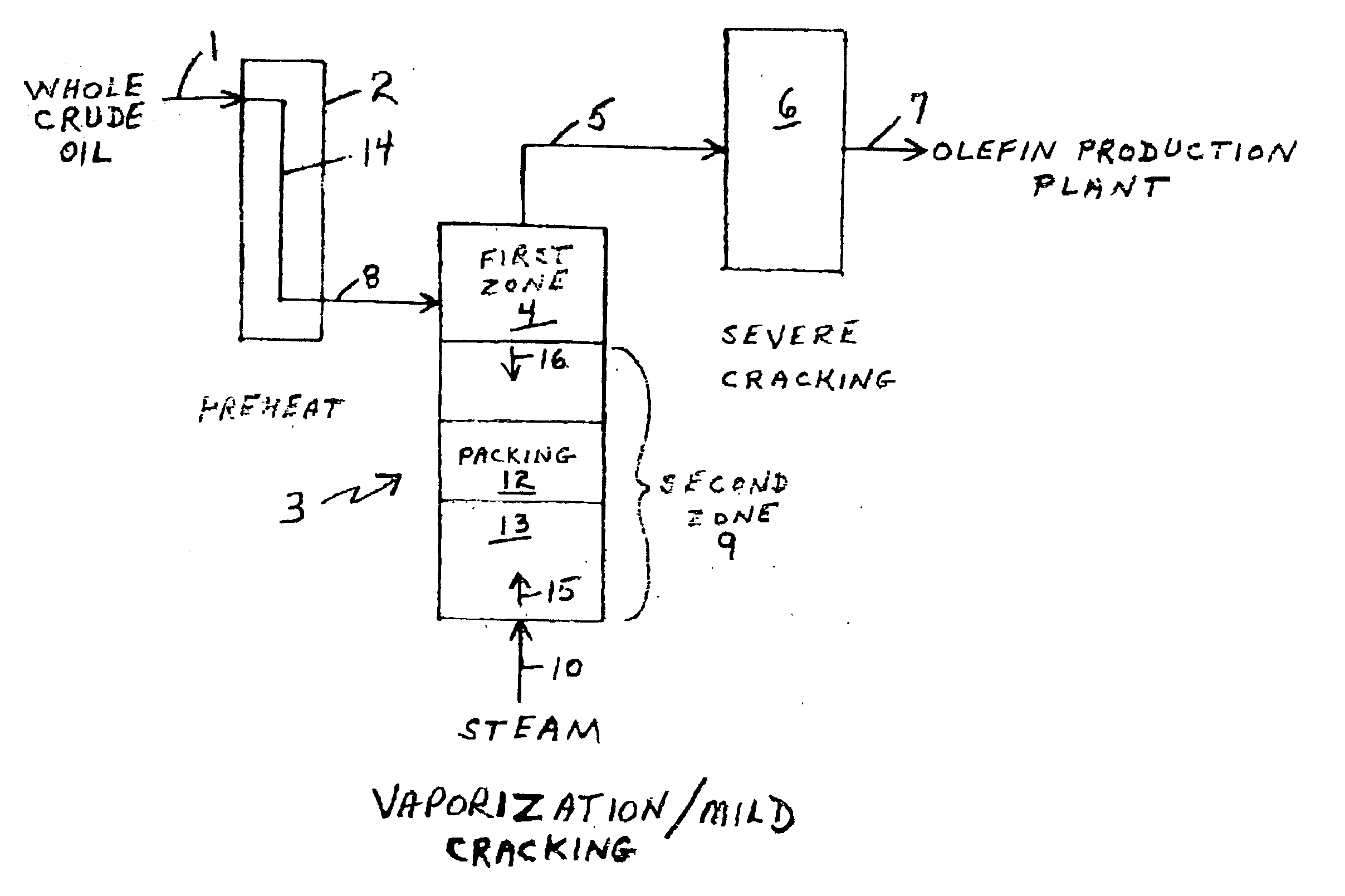Olefin production utilizing whole crude oil
- Summary
- Abstract
- Description
- Claims
- Application Information
AI Technical Summary
Benefits of technology
Problems solved by technology
Method used
Image
Examples
Embodiment Construction
[0048] A whole, straight run crude oil stream from a refinery storage tank characterized as Saharan Blend is fed directly into a convection section of a pyrolysis furnace at ambient conditions of temperature and pressure. In this convection section this whole crude oil primary feed is preheated to about 650.degree. F. and then passed into a separate mild cracking section wherein gases are separated from liquids, and the gases removed from the mild cracking zone to a radiant section of the same furnace for severe cracking in a temperature range of 1,450.degree. F. to 1,550.degree. F.
[0049] The liquid, after separation from accompanying gases, is retained in the mild cracking section and allowed to fall downwardly in that section toward the bottom thereof. Steam at 1,300.degree. F. is introduced into the bottom of zone 9 to give a steam to hydrocarbon ratio at line 5 in the drawing of 1.2 / 1. With respect to the liquid falling downwardly in zone 9, the steam to liquid hydrocarbon ratio...
PUM
 Login to View More
Login to View More Abstract
Description
Claims
Application Information
 Login to View More
Login to View More - R&D
- Intellectual Property
- Life Sciences
- Materials
- Tech Scout
- Unparalleled Data Quality
- Higher Quality Content
- 60% Fewer Hallucinations
Browse by: Latest US Patents, China's latest patents, Technical Efficacy Thesaurus, Application Domain, Technology Topic, Popular Technical Reports.
© 2025 PatSnap. All rights reserved.Legal|Privacy policy|Modern Slavery Act Transparency Statement|Sitemap|About US| Contact US: help@patsnap.com


